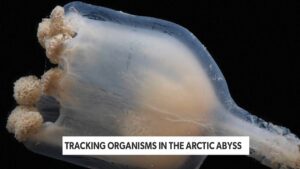
What Lives in the Arctic Abyss?
min read
Sarah Williamson: The Arctic deep ocean; vital to understanding the impact of climate change, the region is now also threatened by deep sea mining.
Vidar Helgesen (Exec. Secretary, Intergovernmental Oceanographic Commission): Global arctic warming is happening up to four times faster than the global average! This means the ecosystems are changing really fast. So, mapping and getting more knowledge about those ecosystems about the species there now — before it’s too late — is very important.
WILLIAMSON: Shrimps covered in hairy bacteria, stalked jellyfish that look like flowers, crustaceans, and fish with antifreeze proteins — the discoveries were made at depth ranging from 2,000 to 3,700 m across some of the arctic’s most extreme habitats.
Dr. Usha Parameswaran (National Centre for Polar and Ocean Research): When you see something that’s never been seen before, it’s really exciting.
WILLIAMSON: With Norway becoming the first country to approve commercial deep sea mining within their territorial waters back in January 2024, it is vital to study and understand these ecosystems now.
Prof Giuliana Panieri (Co-Principal Investigator, OCDAE): We urgently need to build up a baseline that will give us the possibility to understand what will be the changing in the future.
WILLIAMSON: Further imaging sequencing and taxonomy will be completed in October at the ocean census species discovery.
For EarthX, I’m Sarah Williamson.
